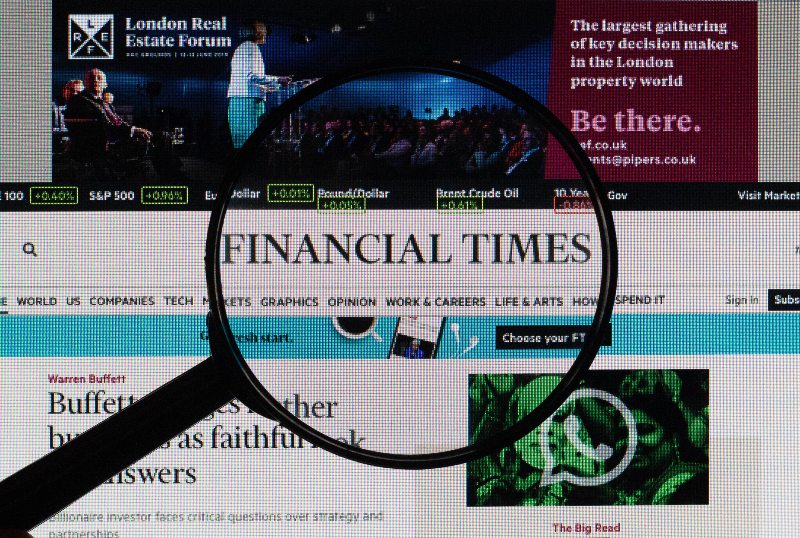“Tabloid journalism”: this is how Tether labels yet another article by the Financial Times that this time targets its CEO, Jean-Louis (JL) van der Velde. Between the newspaper and the stablecoin is staged yet another clash.
The facts
In recent days, the Financial Times has dedicated a long article on Jean-Louis van der Velde, CEO of Tether and Bitfinex. Specifically, it talked about the long career that has seen him involved in the IT sector also in China.
But the Financial Times wanted to highlight a “negative” aspect of his career, namely the fact that at the time of Huashun Electronics, an IT company he managed in China, he had accrued debts for unpaid invoices. This is 2009. The Financial Times adds that Huashun Electronics was managed by Perpetual Action Group (Asia) Inc, or PAG Asia, which has a stake in Tether and also sees the involvement of Giancarlo Devasini, CFO of Tether.
The article states that from 2009 to 2012, the company allegedly accrued several debts, including one with Yang Hebing, who had passed on supplies that were never paid. When Yang Hebing dragged Huashun Electronics to court, no one ever showed up, and although the due was doubled by the judge, the creditor claims it never got its money.
Financial Times reports show that Huashun Electronics in 2013 would have accumulated several judgments condemning it to pay 500,000 RMB (about $78,000) and also a fine arrived in 2012 for illegal behavior on patents.
In any case, the Financial Times points out that Huashun would currently be dead and that the Chinese authorities consider it one of the infringing entities. This prevents van der Velde from running other companies in China.
Poking around van der Velde’s interests, the FT also reports on his passion for martial arts, celebrated in a dedicated YouTube channel.
Tether’s reply to the Financial Times
Tether’s reply was not long in coming. Tether pointed out that the people on his team are private citizens and obviously ran other companies in the past before finding themselves in a new industry described as the dawn of a new internet.
The article, Tether writes, shows how difficult it is to do business in China and how Jean-Louis van der Velde has actually managed to build very good relationships.
But this is not journalism that Tether likes, pointing out:
“As entrepreneurs who have ventured into different endeavors throughout the decades, it saddens them to see this genre of journalism taking over at the Financial Times. It is detrimental to the growth of a booming industry and serves as a distraction from the bigger problem that publications like the Financial Times are grappling with: how a legacy publication can best serve a readership that’s stuck in a prehistoric era.
Rather than taking the effort to truly learn and understand the significance of blockchain technology and the Web3 revolution, reporters such as the ones who penned this article for the Financial Times have chosen to go down the road of tabloid journalism to sustain readership for the once well-respected publication house.”
The article about Tether’s CEO, in short, is tabloid journalism, poking around in the lives of cryptocurrency entrepreneurs just to try to increase suspicion about them. What Tether would like to see, instead, is journalism that helps readers understand this new world.
But it is clear that from the Financial Times, this request will not be granted.

The Financial Times attacks
This is not the first time that the FT has turned the spotlight on Tether members, and this raises the suspicion that it wants for some reason to discredit the project of the largest stablecoin in the cryptocurrency market.
Already some time ago, another article had targeted Giancarlo Devasini, CFO of Tether. To be contested, his past as a plastic surgeon, as if it was illegal that an Italian surgeon could land in the cryptocurrency sector.
At the time, the business newspaper pointed out that one of Devasini’s strengths was making risotto. Combine that with van der Velde’s passion for martial arts, and you’ve got quite a duo.
Tether’s CTO, Paolo Ardoino, wanted to use irony to comment on what the Financial Times reported:
So… Giancarlo makes the best risotto and JL watches Muay Thai videos.
The FT is definitely onto something
Gotta pay for those red noses. https://t.co/Y7bLBHpCJ2— Paolo Ardoino (@paoloardoino) December 19, 2021
“So… Giancarlo makes the best risotto, and JL watches Muay Thai videos.
The FT is definitely onto something (clown emoji). Gotta pay for those red noses.”
The clown emoji clearly indicates what Ardoino thinks of the article.
It’s a safe bet that the more Tether grows, the more attention it will continue to draw to itself. This may translate into more articles about the world’s largest stablecoin, which is working hard to be compliant with regulations while also providing full transparency about its reserves. Whether this will be enough for the press remains to be seen.
The post Tether vs. the Financial Times: clashing again appeared first on The Cryptonomist.















